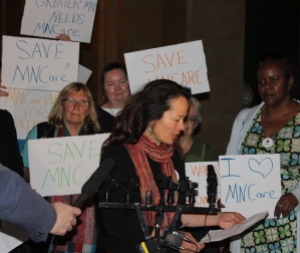Minnesota nurses oppose MNCare repeal
By Mathew Keller, RN JD, MNA Nurse Policy Specialist
When cuts are made to public insurance programs, we all end up paying more. Just the other day I heard the story of Mary*, a young woman who found some unusual lumps in her breast. Having already had her preventive care exam for the year, she could not afford the high cost of following up with her physician. When she was finally able to get her next annual exam, Mary got the heartwrenching news that she had Stage 4 breast cancer.
MinnesotaCare, a public health insurance program for the working poor, is under threat from state legislators in the House of Representatives.
… Read more about: Minnesota nurses oppose MNCare repeal »








